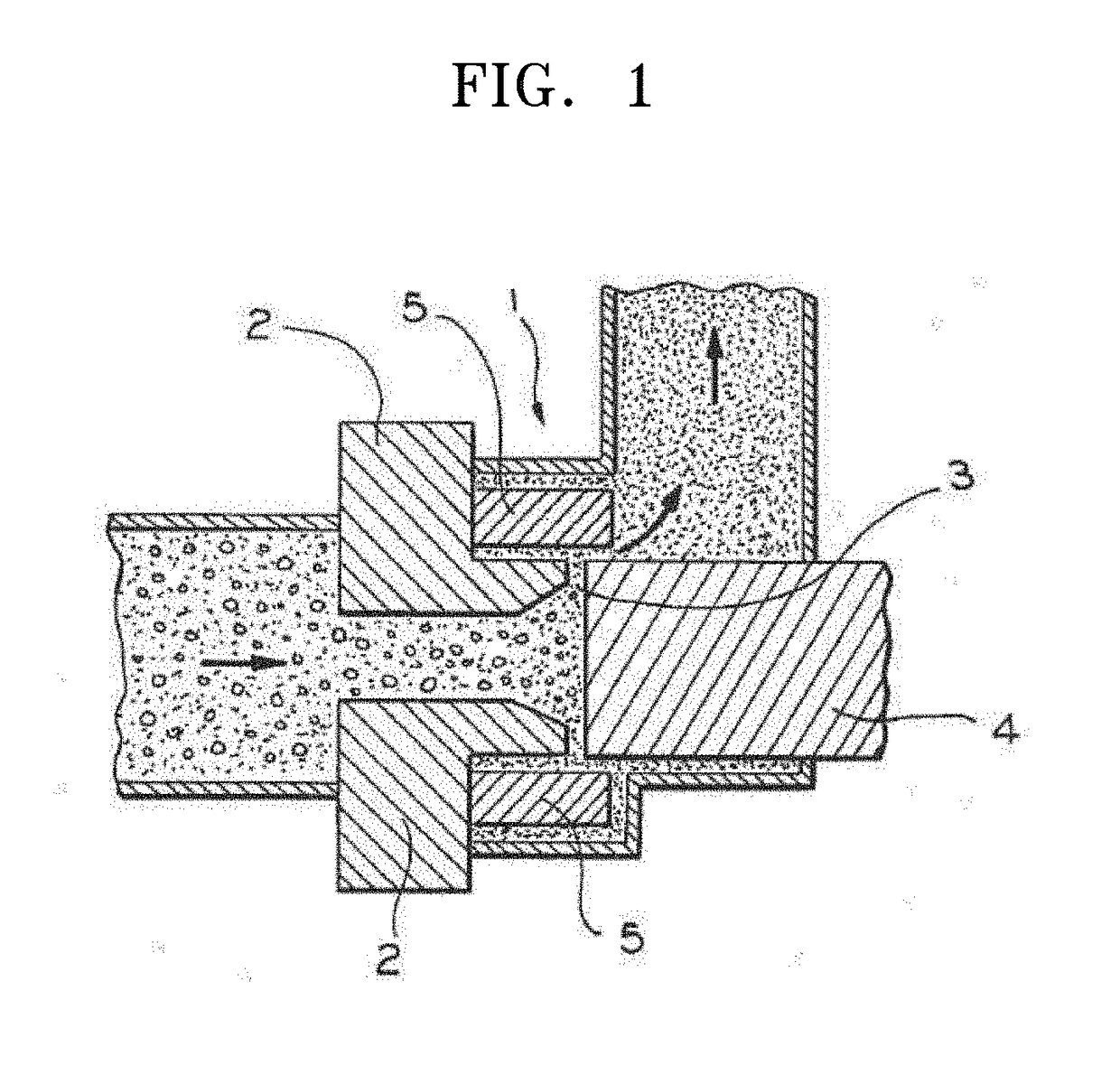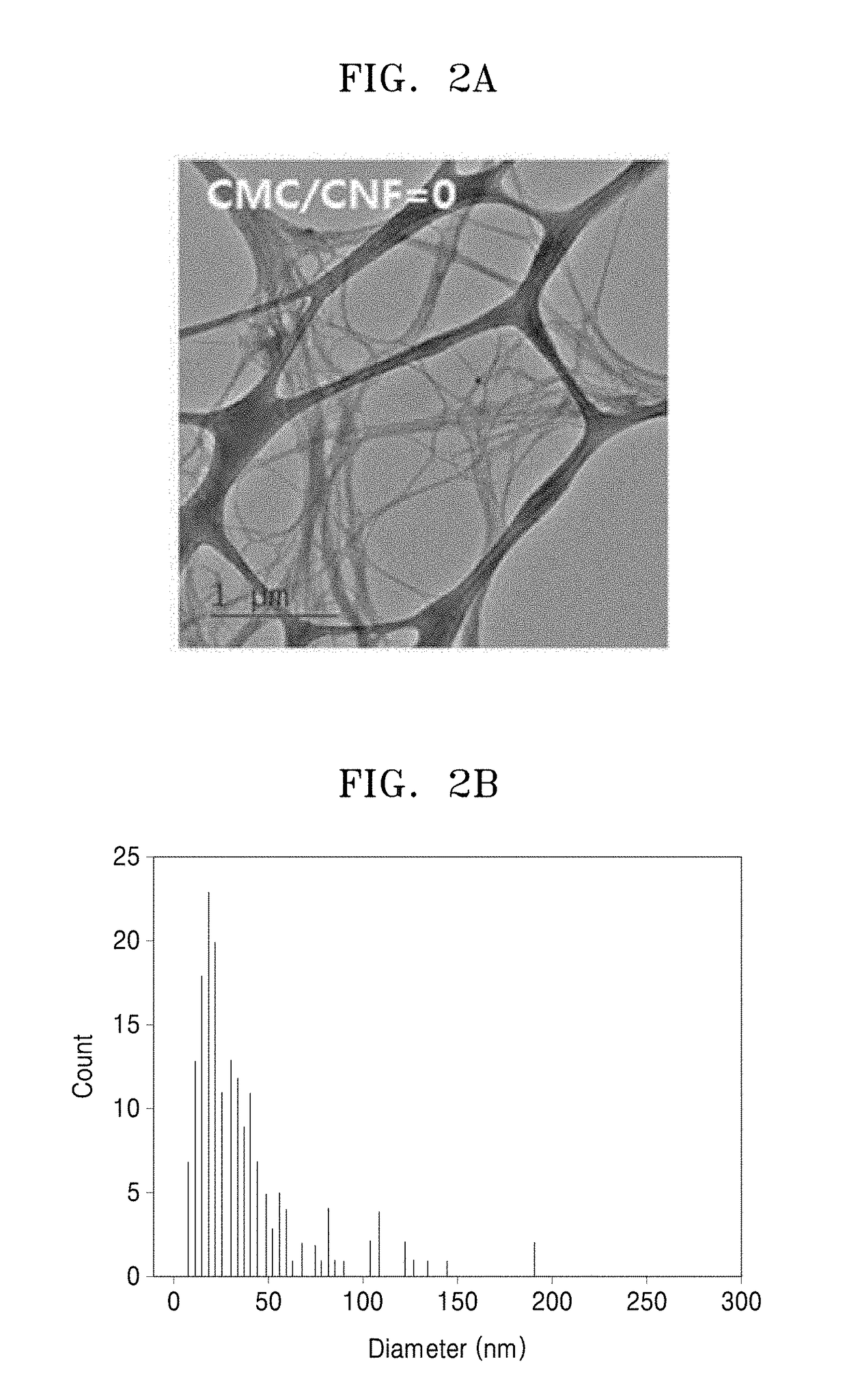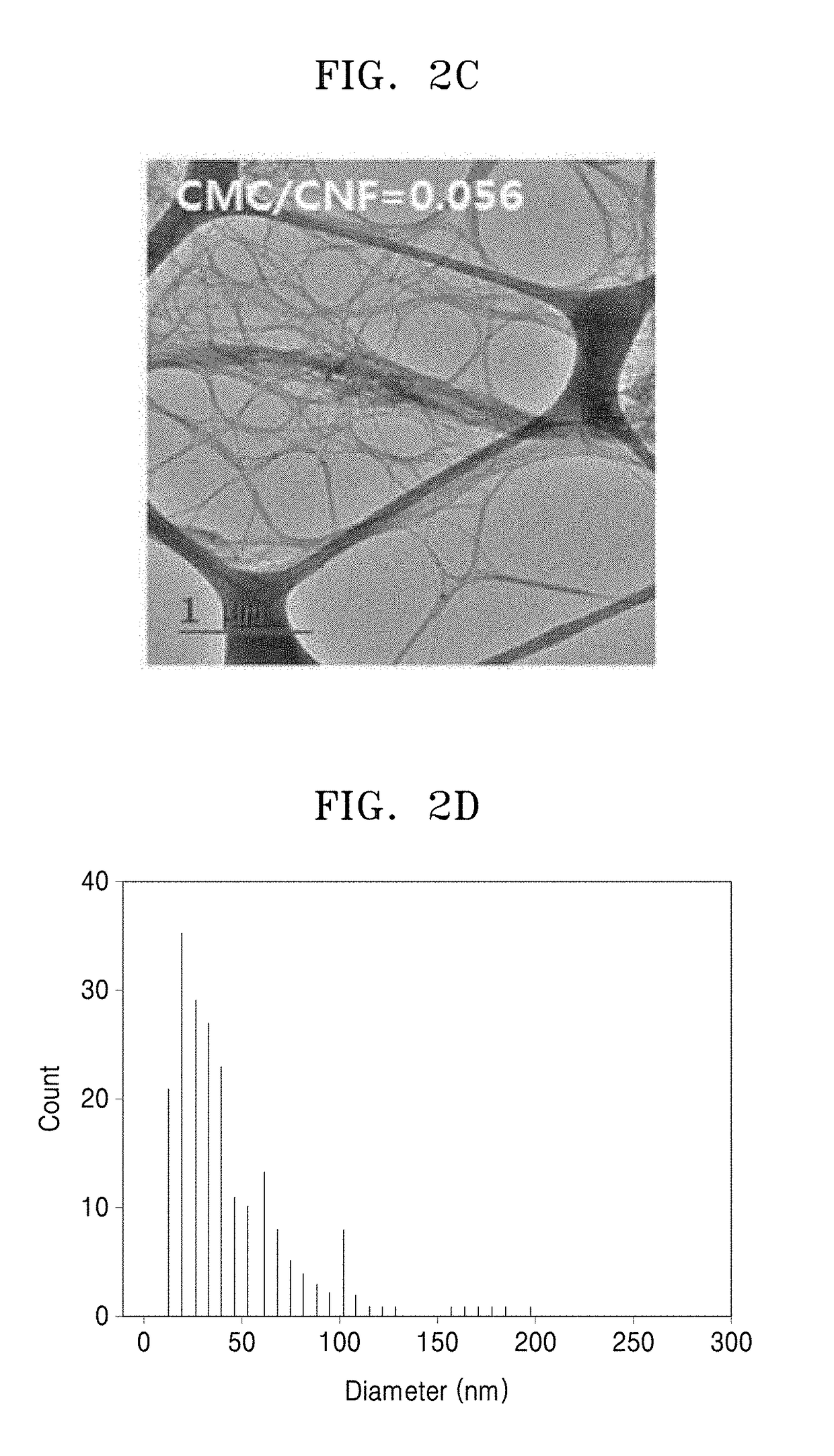Method of producing cellulose nonwoven fabric, cellulose nonwoven fabric produced thereby, and secondary ion battery including the same
a technology of cellulose nonwoven fabric and cellulose nonwoven fabric, which is applied in the direction of cell components, cell component details, electrochemical generators, etc., can solve the problems of reducing the durability of lithium ion batteries and increasing the price of separators
- Summary
- Abstract
- Description
- Claims
- Application Information
AI Technical Summary
Benefits of technology
Problems solved by technology
Method used
Image
Examples
example 1
n of Microbial Cellulose and Production of Cellulose Nonwoven Fabric Such as a Separator Including Microbial Cellulose
[0042]1. Production of Microbial cellulose
[0043]A wild-type strain, Gluconacetobacterxylinum was transferred to 100 ml of Hestrin-Schramm (HS) medium in a 250-ml flask, followed by static culture at 30° C. for 2 weeks. The HS medium included 20 g / L of glucose, 5 g / L of bacto-peptone, 5 g / L of yeast extract, 2.7 g / L of Na2HPO4, 1.15 g / L of citric acid, and 20 mM acetate in water.
[0044]2. Defibration of Microbial Cellulose
[0045]The microbial cellulose produced by static culture was subjected to defibration or disintegrating by the following method.
[0046]In detail, the resulting cellulose pellicle was harvested and washed with distilled water three times, followed by heating with a 2% NaOH aqueous solution at 121° C. for 15 minutes. Cells and impurities present in the cellulose pellicle were hydrolysed, followed by washing with distilled water. Thus, a purified cellulos...
PUM
| Property | Measurement | Unit |
|---|---|---|
| pressure | aaaaa | aaaaa |
| tensile strength | aaaaa | aaaaa |
| pressure drop | aaaaa | aaaaa |
Abstract
Description
Claims
Application Information
 Login to View More
Login to View More - R&D
- Intellectual Property
- Life Sciences
- Materials
- Tech Scout
- Unparalleled Data Quality
- Higher Quality Content
- 60% Fewer Hallucinations
Browse by: Latest US Patents, China's latest patents, Technical Efficacy Thesaurus, Application Domain, Technology Topic, Popular Technical Reports.
© 2025 PatSnap. All rights reserved.Legal|Privacy policy|Modern Slavery Act Transparency Statement|Sitemap|About US| Contact US: help@patsnap.com



